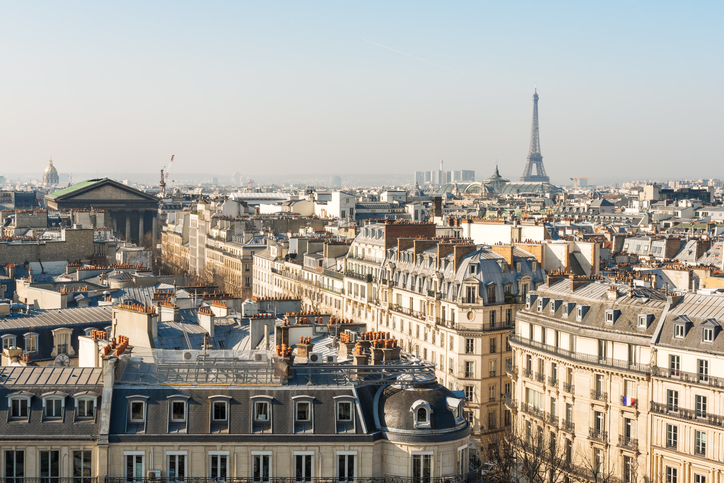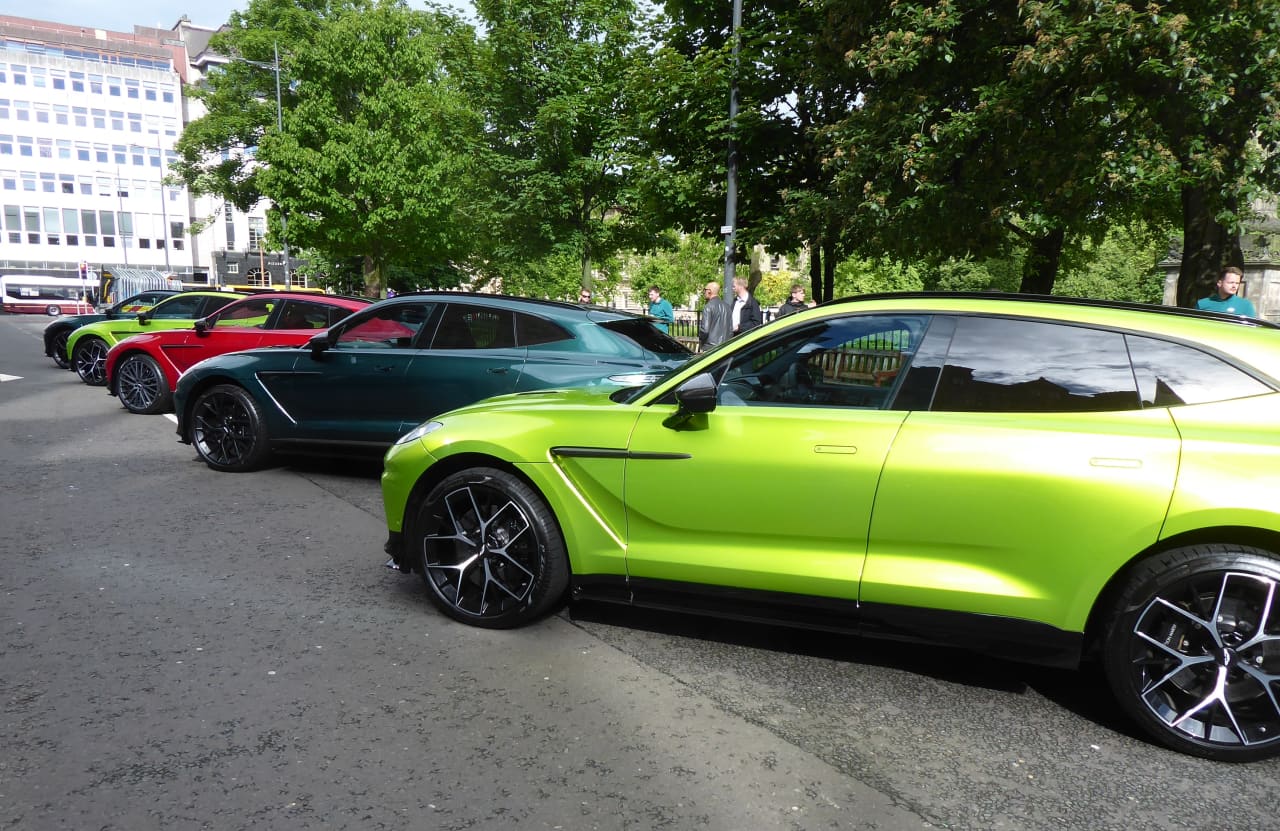Japan’s Market Boom Is Just Getting Started. 2 Big Reasons Why.
About the author: Patrick L. Springer is an institutional-equities business developer and Japan and Asia market specialist. He worked at Morgan Stanley in management roles for more than 20 years.
Japan just concluded a 34-year trek in the wilderness of deflation and ended its nearly 20-year negative interest-rate policy. The stock market has responded by achieving new all-time highs, last seen in 1989, rising 35% in the past year.
This might look like the top, but a closer look at Japan’s market suggests that the end is just the beginning for the world’s third-largest market. This year likely marks the beginning of a multiyear Japan market revival that will start a major new capital markets cycle. Japan’s companies are just beginning to celebrate a long-awaited return of pricing power supported by an enamoured global investor base looking for international ideas in a friendly market.
Investors should focus on two trends. First, new micro and macro forces are at work to make Japan a preferred non-U.S. destination for several years. With the U.S. dollar at 20-year highs, portfolio managers know that it is typically time to diversify and buy cheaper overseas markets, but where to go? Europe is cheap but challenging, and the I of India is what currently remains best of the emerging markets BRICS grouping. Exposure to Asia is important for global portfolios given it is 45% of global gross domestic product. Yet strategists say that we now live in a “multipolar world,” a euphemism for the highest level of geopolitical risks in the world in decades. This limits China investment allocations for now.
But Japan is a pre-eminent security partner for the U.S. Japan also is quickly becoming a key partner in U.S. re-shoring strategies, especially as an alternative supplier of semiconductors and technology components. The re-shoring trend is compounded by the yen’s weakness. At nearly 152 yen to the dollar, Japan’s currency is trading at the lowest ratio since 1990. That means Japan is also likely to regain market share that it lost over the past 20 years to China in automobile components, industrial products, and machinery. Status as a security partner matters to investors now, which will keep allocations to Japan higher for longer.
Second, Japan’s differentiated market structure may provide more alpha-idea opportunities than investors might expect from an older, developed economy. In the U.S., megacaps and the Magnificent Seven rule the world for investors—and for good reason, given their recent outperformance. The high level of exchange-traded fund penetration in the U.S. also favours large-caps over small- and medium-capitalisation stocks. But in Japan, the list of Japan’s largest companies remains unchanged: Excluding SoftBank, all were established pre-1960.
According to Abrdn Investments, 45% of Japan’s benchmark Topix Index of 2000 constituents have no analyst research coverage, compared with just 3% of the Russell 3000 universe for the U.S. As inflation sparks growth, earnings surprises and inflections of Japan’s under researched companies will lead to significantly higher alpha capture opportunities.
Additionally, the Japanese government and the Tokyo Stock Exchange have initiated important corporate-governance reforms, and 26% of all listed companies have submitted specific plans to improve their stock valuation. But many more companies have yet to respond, providing more opportunities for investors.
Sorting Japan’s nearly 3,900 stocks into market segments is revealing. Japanese mid-cap and small-cap stocks have lagged behind large-cap stocks by 40% and 60% year to date, respectively, and have lagged by 25% and 46% on a one-year basis.
Such underperformance by itself is one thing, but for the many investors who have never seen inflation, wage growth, and domestic sales gains in Japan, they may find a discovery universe of new stocks with interesting characteristics such as these:
Organo , a $2 billion market-cap water treatment company that has traded over $60 million a day on some days and counts Taiwan Semiconductor Manufacturing as one of its key growth customers.
Nakanishi , a $1.5 billion dental-equipment and precision-tools maker that grew sales 23% last year, sports a 2.5% yield and a 24% return on equity, and has 12% of its stock price in net cash.
Chugoku Marine Paints , a global top-three maker of marine paints that has a 20% global share and a 15% return on investment capital, sells at nearly 11 times earnings, and has a 2.6% dividend yield.
Overall, this analysis finds nearly 100 companies with a market cap above $1 billion with net cash equal to 20% or more of their stock price.
The bottom line is that Japan’s culture of innovation, combined with an end to deflation, is likely to produce a new wave of capitalisations. During the decades of deflation, corporates and consumers alike were incentivised to save more, spend less, and underinvest. But with nominal GDP growth now running at a whopping 5% and record wage growth, inflation incentivises new capital investment, stimulating a new investment-banking cycle of financing.
There are risks to this outlook. Double-digit market rallies can lead to pullbacks, and investors need to watch for threats to Japan’s inflation and currency levels and to its appetite for reform. But what’s most important for investors to realise about Japan is how much has changed there, amid a changing world.
Guest commentaries like this one are written by authors outside the Barron’s newsroom. They reflect the perspective and opinions of the authors.
 Copyright 2020, Dow Jones & Company, Inc. All Rights Reserved Worldwide. LEARN MORE
Copyright 2020, Dow Jones & Company, Inc. All Rights Reserved Worldwide. LEARN MORE
This stylish family home combines a classic palette and finishes with a flexible floorplan
Just 55 minutes from Sydney, make this your creative getaway located in the majestic Hawkesbury region.
Continued stagflation and cost of living pressures are causing couples to think twice about starting a family, new data has revealed, with long term impacts expected
Australia is in the midst of a ‘baby recession’ with preliminary estimates showing the number of births in 2023 fell by more than four percent to the lowest level since 2006, according to KPMG. The consultancy firm says this reflects the impact of cost-of-living pressures on the feasibility of younger Australians starting a family.
KPMG estimates that 289,100 babies were born in 2023. This compares to 300,684 babies in 2022 and 309,996 in 2021, according to the Australian Bureau of Statistics (ABS). KPMG urban economist Terry Rawnsley said weak economic growth often leads to a reduced number of births. In 2023, ABS data shows gross domestic product (GDP) fell to 1.5 percent. Despite the population growing by 2.5 percent in 2023, GDP on a per capita basis went into negative territory, down one percent over the 12 months.
“Birth rates provide insight into long-term population growth as well as the current confidence of Australian families,” said Mr Rawnsley. “We haven’t seen such a sharp drop in births in Australia since the period of economic stagflation in the 1970s, which coincided with the initial widespread adoption of the contraceptive pill.”
Mr Rawnsley said many Australian couples delayed starting a family while the pandemic played out in 2020. The number of births fell from 305,832 in 2019 to 294,369 in 2020. Then in 2021, strong employment and vast amounts of stimulus money, along with high household savings due to lockdowns, gave couples better financial means to have a baby. This led to a rebound in births.
However, the re-opening of the global economy in 2022 led to soaring inflation. By the start of 2023, the Australian consumer price index (CPI) had risen to its highest level since 1990 at 7.8 percent per annum. By that stage, the Reserve Bank had already commenced an aggressive rate-hiking strategy to fight inflation and had raised the cash rate every month between May and December 2022.
Five more rate hikes during 2023 put further pressure on couples with mortgages and put the brakes on family formation. “This combination of the pandemic and rapid economic changes explains the spike and subsequent sharp decline in birth rates we have observed over the past four years,” Mr Rawnsley said.
The impact of high costs of living on couples’ decision to have a baby is highlighted in births data for the capital cities. KPMG estimates there were 60,860 births in Sydney in 2023, down 8.6 percent from 2019. There were 56,270 births in Melbourne, down 7.3 percent. In Perth, there were 25,020 births, down 6 percent, while in Brisbane there were 30,250 births, down 4.3 percent. Canberra was the only capital city where there was no fall in the number of births in 2023 compared to 2019.
“CPI growth in Canberra has been slightly subdued compared to that in other major cities, and the economic outlook has remained strong,” Mr Rawnsley said. “This means families have not been hurting as much as those in other capital cities, and in turn, we’ve seen a stabilisation of births in the ACT.”
This stylish family home combines a classic palette and finishes with a flexible floorplan
Just 55 minutes from Sydney, make this your creative getaway located in the majestic Hawkesbury region.






















